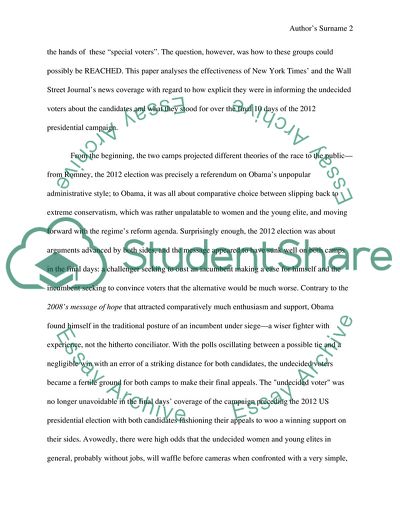Cite this document
(The Press and Presidential Politics Essay Example | Topics and Well Written Essays - 2000 words - 1, n.d.)
The Press and Presidential Politics Essay Example | Topics and Well Written Essays - 2000 words - 1. Retrieved from https://studentshare.org/journalism-communication/1787820-the-press-and-presidential-politics
The Press and Presidential Politics Essay Example | Topics and Well Written Essays - 2000 words - 1. Retrieved from https://studentshare.org/journalism-communication/1787820-the-press-and-presidential-politics
(The Press and Presidential Politics Essay Example | Topics and Well Written Essays - 2000 Words - 1)
The Press and Presidential Politics Essay Example | Topics and Well Written Essays - 2000 Words - 1. https://studentshare.org/journalism-communication/1787820-the-press-and-presidential-politics.
The Press and Presidential Politics Essay Example | Topics and Well Written Essays - 2000 Words - 1. https://studentshare.org/journalism-communication/1787820-the-press-and-presidential-politics.
“The Press and Presidential Politics Essay Example | Topics and Well Written Essays - 2000 Words - 1”. https://studentshare.org/journalism-communication/1787820-the-press-and-presidential-politics.


